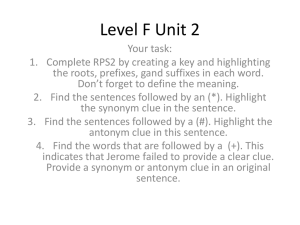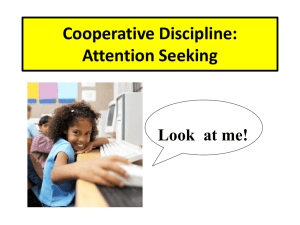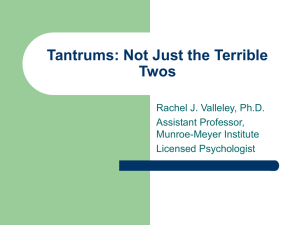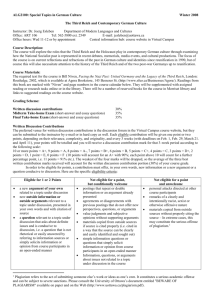Power-Seeking Behaviors
advertisement
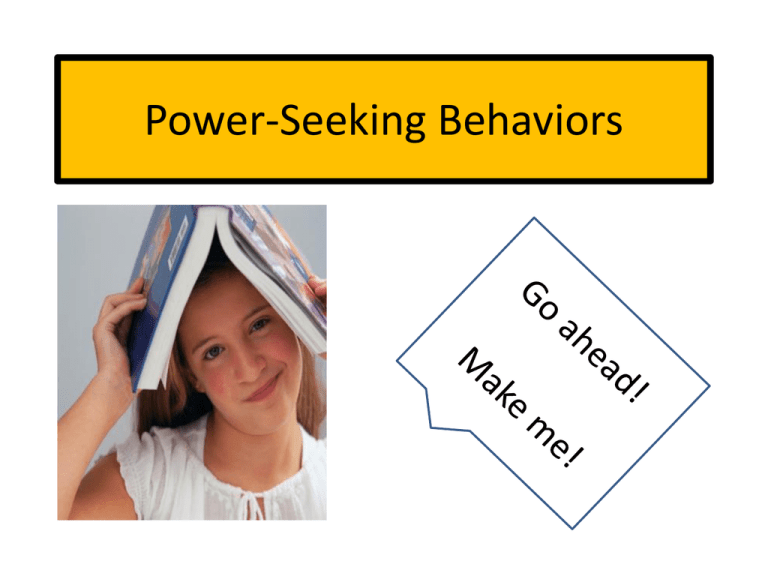
Power-Seeking Behaviors Characteristics of Power-Seekers 1. Power-seeking students constantly challenge their teachers. 2. These students like to be in charge. 3. They disregard directions or use colorful language as a challenge to our authority. 2 Types of Power-Seekers Active Passive Active Power-Seeks Tantrums are the most obvious form of power-seeking behaviors for youngsters. Older students tend to throw verbal tantrums, often termed “sass”. Strategy for Active Power-seekers 1. Tantrums require an audience. Walk away and remove the class. 2. When given “sass”, do not join in to the power struggle. Passive Power-Seekers 1. Quiet Noncompliance 2. Hiding Behind a Label (learned helplessness) 3. The Lazy Label 4. The Forgetful Label 5. The Short Attention-Span Label 6. The Underachieving Label Characteristics of Power-Seekers Power Clue 1: Their behavior makes us feel angry, frustrated, and perhaps fearful that you will loose control of the class. Power Clue 2: You feel like “fighting back with words”. Power Clue 3: Power behaviors are longer lasting…and more difficult to change. Prevention is the key! 1. Allow voice and choice—to many, having their say is as important as having their way. 2. Grant legitimate power.—using the hands-joined management style. 3. Delegate responsibility– give constructive ways to use power. Let’s Put It Into Practice! In a small group, practice the skills you learned in this module. Take turns being the teacher. -- passive laziness --disability excuses --attention excuses --prevention strategies
